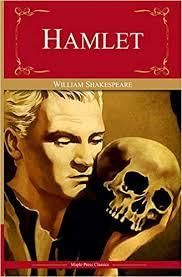Statement of Financial Position (Balance Sheet) - Financial Analysis and Management | Accountancy and Financial Management - B Com PDF Download
Definition
Statement of Financial Position, also known as the Balance Sheet, presents the financial position of an entity at a given date. It is comprised of three main
components: Assets, liabilities and equity.
Statement of Financial Position helps users of financial statements to assess the financial soundness of an entity in terms of liquidity risk, financial risk, credit risk and business risk.
Example
Following is an illustrative example of a Statement of Financial Position prepared under the format prescribed by IAS 1 Presentation of Financial Statements.
Statement of Financial Position as at 31st December 2013
Statement of Financial Position as at 31st December 2013 | |||
ASSETS | Notes | 2013 USD | 2012 USD |
Non-current assets | |||
Property, plant & equipment | 9 | 130,000 | 120,000 |
Goodwill | 10 | 30,000 | 30,000 |
Intangible assets | 11 | 60,000 | 50,000 |
220,000 | 200,000 | ||
Current assets | |||
Inventories | 12 | 12,000 | 10,000 |
Trade receivables | 13 | 25,000 | 30,000 |
Cash and cash equivalents | 14 | 8,000 | 10,000 |
45,000 | 50,000 | ||
TOTAL ASSETS | 265,000 | 250,000 | |
EQUITY AND LIABILITIES | |||
Equity | |||
Share capital | 4 | 100,000 | 100,000 |
Retained earnings | 50,000 | 40,000 | |
Revaluation reserve | 5 | 15,000 | 10,000 |
Total equity | 165,000 | 150,000 | |
Non-current liabilities | |||
Long term borrowings | 6 | 35,000 | 50,000 |
Current liabilities | |||
Trade and other payables | 7 | 35,000 | 25,000 |
Short-term borrowings | 8 | 10,000 | 8,000 |
Current portion of long-term borrowings | 6 | 15,000 | 15,000 |
Current tax payable | 9 | 5,000 | 2,000 |
Total current liabilities | 65,000 | 50,000 | |
Total liabilities | 100,000 | 100,000 | |
TATAL EQUITY AND LIABILITIES | 265,000 | 250,000 | |
Three Main Elements
The following are the three main elements of the statement of financial position:
- Assets
- Liabilities
- Equity
Here is detail,
Assets: First Items in the Balance Sheet
Assets are the resources belonging to the entity. Total assets here will report all types of entity’s assets. These include current assets and non-current assets. Current asset rank above non-current assets.
The common examples of assets are land, building, cars, cash in the bank and on hand, inventories and account receivable. Any assets that bong to the owners or shareholders do not include here.
In Balance Sheet, Assets report at the first part before Equity and Liabilities.
Current Assets:
Cash and Cash Equivalence:
Report the balance of cash and cash equivalence that being to the entity at the reporting date. It could be cash on hand, petty cash, cash deposit in the bank or others financial note that equivalence to cash. Equivalence to cash mean easily convert into cash.
Accounts Receivable:
Accounts receivable are the receivable amount by the entity from its customers as the result of credit sales. This amount is expected to be received in a period of fewer than twelve months from the reporting date or Balance Sheet date.
If part of receivables is expected to receive over twelves months, then they have to class into long term assets.
Prepaid Expenses:
Prepaid is the amount that the entity pays to its suppliers in advance to secure, thought, services or products. For example, the company wants to purchase computers, and because the computers are limited in the stores, or the computer needs to order from the outside country, the supplier requires the company to make a certain deposit.
At the time of deposit, the entity does not receive the computer from its supplier yet. Prepaid expenses are the assets of the entity and they have to records in the balance. They are not expenses yet.
Inventories:
Inventories here include all kind of inventories: Raw material, work in process and finish goods. At the end of the accounting period, the entity usually performs physical count to all inventories and then qualifying them.
The inventories count are normally accompanied by auditors. In a manufacturing company, Inventories are the main items in the Balance Sheet. Inventories normally record at selling prices less cost to sell.
Due to related parties:
This amount is required to be reported as the result of accounting standard requirement. Amount due from related parties are not only required to present in the balance sheet but also need to disclose properly in the note to financial statements.
This amount results from selling of products or rendering of services to its related parties. For example, parent company, associate and subsidiary.
Non-Current Assets:
Non-current asses here include both tangible and intangible assets of an entity. Here detail all of them.
Tangible Non-Current Assets:
- Machinery needs to class and report as non-current assets as the useful life of it is longer than one year. The machinery is recorded in the Balance Sheet at cost. And then depreciation base on entity depreciation policies. Once the entity dispose of, the cost and accumulate depreciation related to machinery need to be removed from fixed assets schedule and Balance Sheet as well.
- Equipment: This is the kind of equipment that uses in the entity which has a useful life more than twelve months period. The same as machinery and other long-term assets, equipment is recorded as costs.
- Leasehold Improvements: this type of assets happens when the entity does not own the building or office that it is using. The office or building is rent from others and because of business requirement, the entity makes improvement on its. For example, the entity rent office building. The owner of the building provides only the building space. All other decoration, and room for staffs responsible by the entity. In this case, to make decoration and room, the entity will incur costs and that costs are not classified as expenses immediately. They treat as assets and depreciate as the expenses over the period of time in the income statement.
- Buildings: Buildings here could be the office building for head office or brand. they are records as non-current assets and depreciate base on its useful life.
- Vehicles: they are including cars for use in the company or similar types of vehicles are including here. Vehicles rental experience should not record as fixed assets. The expenses should be recorded in the income statement.
- Long-term notes receivable: This is the same to account receivable that we record in the current assets. The reason we record here because part of receivables is expected to receive in the period of more than twelve months.
Intangible Non-Current Assets:
- Investments: this is referring to long term investment that expects to be recovered into cash in the long term or more than twelve months. The kind of investments is like stock or bond something.
- Goodwill: This kind of assets happens when the entity purchase the new subsidiary while the net book value of assets of that subsidiary is less than what the entity offer.
- Trademarks: the costs of assets that entity purchase probably from the government or professional body.
- Patent: This is the cost that entity purchase the right to operate the services or sales the products in the country. This normally one year period.
Liabilities: Second Item in the Balance Sheet
There are two types of liabilities in the Balance Sheet. They are,
Short-term liabilities
Short-term liabilities are the liabilities that expected to be paid with the period less than twelve months from the Balance Sheet date.
- Accounts Payable is the amount that the entity owes to its suppliers as the result of purchases goods, materials or rendering of services.
- Accrued Expenses: Accrual is almost the same to account payable. But just because you are not receiving the invoices from your suppliers yet, you can not books what the entity own as payable.
- Unearned Revenue is the type of liabilities and this is a contrast from the deposit. For example, you are offering the services to your customers and they pay you in advance. In this case, you have not provided the services to them yet. In such a case, you have to book as unearned revenue rather than revenue.
- Current Portion of Long-term Debt: this is the part of the long term debt. For example, the entity own to the bank for 10,000 and the loan need to install on a monthly basis. This these case, you have to figure out how much is the amount that the entity has to pay within one year. That amount is the current portion of long term debt.
Long-term Liabilities
Here is the sample of long term liabilities.
- Mortgage Payable this is the number of mortgage liabilities that expected to be paid longer than twelve months period and for that amount that payable less than twelve months, we need to class them out to current liabilities.
- Notes Payable is quite the same the account payable. These amounts are what we expected to pay in longer than twelve months periods.
- Long-term Loans: is the long term liabilities that expected to pay in a period of more than twelve months.
- Finance Lease is the kind of financing that a company occur that assets by obtaining the finance from other company or the entity that they purchasing.
Shareholders’ Equity: Third Items in the Balance Sheet
Shareholders’ Equity, Owner’s Equity or Stockholders Equity are called differently in the Balance Sheet because of the nature of business. For a private company, we usually called owner equity because and for a corporation, we usually call shareholders or stockholder equity.
The total amount of shareholders’ equity is the leftover amounts from assets and liabilities as well as from business operation. For example, if the company operating loss, the equity will be reduced eventually.
There are many sub-components that recording under shareholders’ equity. Those including Common Stock, Prefer Stock, Retained Earnings, and Accumulated Other Comprehensive Incomes. All sub-elements that records or class under equity elements are increasing in credit site and decrease in debit site same as liabilities element.
Common Stock:
Common Stock or Ordinary shares are the same, and this class of shares normally has the voting right. The ordinary share is recording at par value in the balance sheet under equity sections. Detail of it could be found in the statement of change in equity and Noted to Financial Statements.
This types of stock represent the ownership of the corporation. If the corporation goes to liquidation, then the holders of this stock have less priority to get payments than others preferred shareholders or lenders.
Retain Earning or Accumulated Losses/ Profit :
Retain Earning or accumulated losses is recording the equity section of the balance sheet. This is the accumulation of profits or losses that corporation or entity has earned so far. The balance of return earning could be reduced once the entity makes dividend payments to its shareholders or reinvestment.
It is depending on the company’s investment and financial strategy. Retain earning can be calculated by the accumulation of beginning balance of retain earning plus net income during the year and minus dividend payments during the year.
Reserve:
It is normally the statutory or standard requirement for the company to make a reservation for a special occasion that could happen unexpectedly. Sometimes it is named Capital Reserve. For example, if the corporation is the banks, then the central banks might require the corporation to have certain amounts of the capital reserve for the liquidations.
Dividend:
The dividend is the amount that reduces the total shareholders’ equity. It is what the company pay to its shareholders and mostly decided by the board at the end of the year. Dividend might report as the contract to retain earning or some time it is recorded as the net off retain earning.
Balance Sheet Template:
The following is the template, and you can also download it in excel below:
How to Prepare Balance Sheet?
Now let we move to the example of how to prepare the Balance Sheet.
Question
Now we come to ABC again and here assuming that the information provides below are correct.
ABC is the company that operates in the hotel industry and the following is the information that extracts from the trial balance at 31 December 2015,
Now prepare the balance sheet of ABC on 31 December 2015.
Answer:
Here is the answer,
Examples with Solutions:
Example 1:Emma Hendricks, a sole trader, had the following assets and liabilities at financial year end:
Required
a. What is the balance of equity as at the end of the two financial years?
b. If Emma contributed an extra $8000 capital during the financial year ending 30 June 2016 and made no drawings, determine her profit (or loss) for the year, assuming all the above balances remain the same and it was a cash only business.
Solutions:Use the accounting equation Assets= Liabilities + Equity. The equity amount can be determined by rearranging the formula to: Assets – Liabilities = Equity
a)30/6/2015 Total Assets $97,500 less Total Liabilities $56,000= Total Equity $41,50030/6/2016 Total Assets $104,000 less Total Liabilities $58,000= Total Equity $46,000
b) 30/6/2016 Total Equity is $46,000 from part a) Using a statement of changes of owners equity we can work out what the profit or loss is.
The answer is a loss of $3,500, (41,500+8000+?=46,000 which is rearranged to be ?=46,000-41,500-8000)
Example 2:From the following account balances of Daisy Pty Ltd as at 30 September 2015, produce a balance sheet in both the T-format and the narrative classified format:
Solution:
Balance sheet in T-format
Balance sheet in narrative format

Example 3:Solve for the missing financial numbers as they would appear on the balance sheet
Solution:
|
44 videos|75 docs|18 tests
|
FAQs on Statement of Financial Position (Balance Sheet) - Financial Analysis and Management - Accountancy and Financial Management - B Com
| 1. What is a Statement of Financial Position (Balance Sheet)? |  |
| 2. What is the purpose of financial analysis and management? |  |
| 3. What does the "B Com" qualification refer to in the article title? |  |
| 4. What are some common items found in a Statement of Financial Position? |  |
| 5. How can a Statement of Financial Position be used for financial decision making? |  |




























